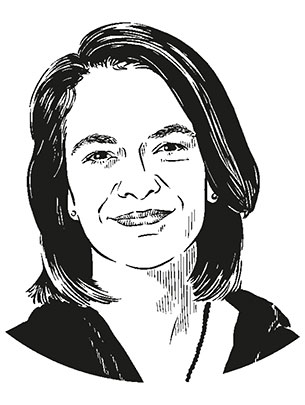Corruption: What is the problem, Claudia Baez Camargo?
Text: Claudia Baez Camargo
What are the mechanisms behind global corruption and what is the best way to combat it?
Promoting economic growth and alleviating poverty have been essential goals pursued for decades by the international community through the activities of numerous international and bilateral organizations. During the 1980s, as economic crises spread across the developing world, international institutions recommended strict austerity measures and neoliberal reforms to open up the aff ected economies to free trade and constrain the role of the state in the economy.
By the mid-1990s, disappointing outcomes in terms of growth and poverty alleviation in countries that had diligently adopted the neoliberal agenda called this whole approach into question. And so the discourse shifted: The problem was not with free markets but rather with governments that were incapable of correctly applying the reforms. Corruption and weak governance then became the main culprits for the lack of progress in promoting development.
After more than 20 years since the fight against corruption was made a priority on the international agenda, the results continue to disappoint. How can this lack of success be explained? I argue that the adoption of anti-corruption as a priority for development actors is problematic because international and bilateral donors, by the very nature of their relationship with recipient countries, must avoid being seen as intruding in their political affairs. The fight against corruption therefore became a technical affair.
International best practices have overwhelmingly emphasized the adoption of
robust legal and institutional frameworks (often resembling those of advanced Western democracies) as well as eff orts to build capacity and raise awareness to empower local stakeholders to resist and denounce corruption. Certainly, many of the most endemically corrupt countries now have sound laws and regulations; however, few of them are consistently observed and enforced in practice. The result is a form of isomorphic mimicry: state institutions and laws that look like those of donor countries but with little of the function.
Comparative research from regions as diverse as sub-Saharan Africa, Central Asia and Latin America indicates that corruption is linked to informal practices of elites aimed at creating governability by rewarding supporters and co-opting opponents through strategic appointments to positions of power. The recipients of these privileged positions are allowed, with impunity, to exploit the power and resources associated with public offi ce in exchange for mobilizing support and maintaining loyalty to the regime. Taken from this perspective, the lack of “political will” to punish the corrupt comes as no surprise.
Average citizens, who unquestionably suffer the consequences of corruption, are not necessarily natural advocates of anticorruption. Unmet needs are the main reason for tolerance of corrupt practices, because practices of bribery and favoritism are seen as strategies for “getting things done”.
How do we move forward? While it is important to address “technical” challenges, such as weak legal frameworks and a shortage of offi cials trained to investigate serious fi nancial crime, this will almost certainly not be enough. We must go deeper into our understanding of local drivers of corruption in order to develop strategies that address them eff ectively. One size does not fit all. Researchers and practitioners should be encouraged to think creatively to develop anti-corruption reforms that take into account the incentives of their intended benefi ciaries and that work with – and not against – widely accepted social, political and economic relationships.
More articles in the current issue of UNI NOVA.

